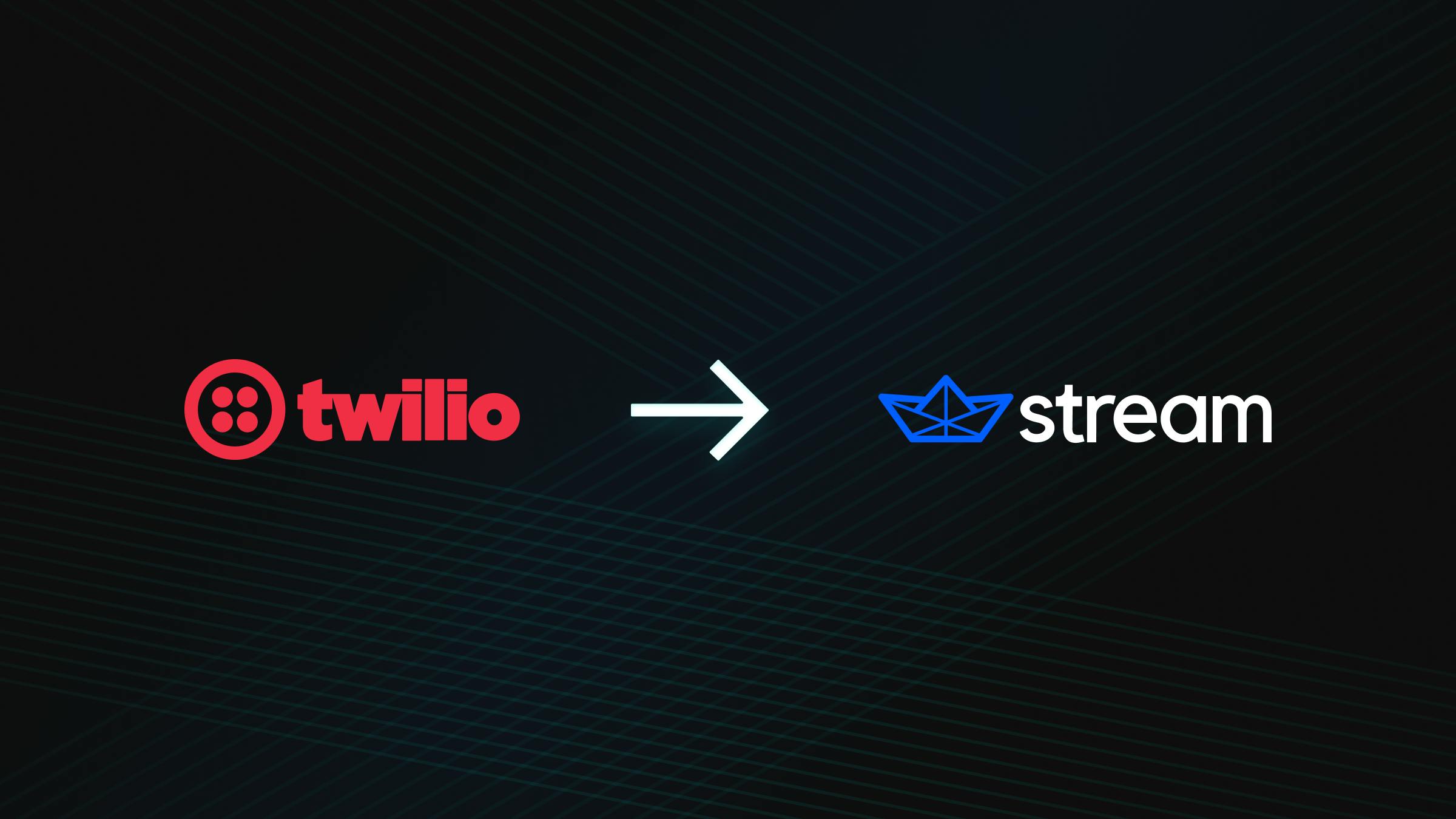With Twilio Programmable Chat’s end of life approaching, product and engineering teams that rely on this popular API face a difficult decision. Twilio’s official guidance indicates that Programmable Chat’s web and in-app chat functionality will roll into the omnichannel Conversations API — but the transition will require app developers to make manual code updates, and feature parity between the two platforms isn’t guaranteed. Given Twilio’s focus on SMS, MMS, WhatsApp, and other communication channels like email, their commitment to maintaining a modern and competitive in-app chat toolkit feels uncertain at best.
This uncertainty, considered alongside the investment of time and resources already required to migrate to the Conversations API, presents an opportunity to consider alternative chat API and SDK providers. Current Twilio Programmable Chat customers may be able to migrate away from Twilio entirely and integrate a significantly more powerful and feature-rich chat platform in a similar amount of time.
Read our Twilio chat migration guide to learn what the process of migrating to a new provider could look like for your organization.
Twilio Programmable Chat Migration Challenges
Twilio’s migration instructions reveal a fairly cumbersome process, and Twilio’s own comparison table shows a number of Programmable Chat features not yet supported by the Conversations API. Even critical features to a seamless chat experience like unread message counts and the ability to sync a user’s message read status across devices are not yet supported in the Conversations API.
These features may be included on Twilio’s 2021 roadmap, but the as-yet incomplete feature set creates a roadblock for teams looking to migrate proactively and test rigorously ahead of the Programmable Chat sunset date. What’s worse, the transition appears to effectively kill public channels, making it especially difficult to stick with Twilio if you need to support a Slack-like team chat experience.
According to Twilio’s migration guide, “If there are any public Chat Channels that you wish to use in Conversations, you should create a new private Channel, which will be available as a Conversation resource through the Conversations REST API. Alternatively, you could create a new Conversation resource using the REST API with the same Participants that you had in your public Chat Channel.” This process seems straightforward enough if your app serves a limited number of users and channels, but could require extra work to automate the transition at scale.
Twilio Conversations API Alternatives
If Twilio Programmable Chat currently powers your app’s messaging experience, migrating to the Twilio Conversations API may not be your best option. Dedicated chat providers like Stream have invested heavily to create both front-end and back-end chat components that are easy to integrate and optimized to delight end users, boosting app engagement and retention. These providers are committed to constantly leveling up the polished in-app chat experience today’s users expect instead of simply maintaining a serviceable status quo.
Twilio doesn’t appear to be prioritizing this level of cutting-edge chat functionality, and even the current Programmable Chat API is starting to fall behind. With even fewer features carrying over to the Conversations API, it’s unclear whether Twilio intends to seriously compete with today’s leading in-app chat providers. Instead, the priority appears to be a broader approach with basic in-app chat functionality merged into a centralized omnichannel platform.
For some use cases, this omnichannel approach can be powerful: A company could send customers one-way notification messages via each customer’s preferred channel without the need for users to download an additional app, for example. Customers could contact sales or support teams using their preferred channel, and the Conversations API would group all incoming communications into one dashboard. But teams leveraging in-app chat to drive user engagement and retention know the value of a polished chat experience that doesn’t tempt users to switch channels in the first place.
In other words, if your app is central to your customer experience (or if your app is your main product), it may make more sense to invest in a truly great in-app chat solution outside of Twilio than to settle for a more basic chat experience that comes packaged with other Conversations API components that don’t fit your use case.
Twilio Programmable Chat vs. Stream Chat
Twilio’s ubiquity in the SMS world makes it seem like an obvious choice for in-app chat, but engineers and product managers might be surprised to find that the Stream Chat API and SDKs offer a more complete messaging solution. Stream Chat was born in the cloud and built on a strong foundation already proven in the activity feed space. Currently supporting over one billion end users, Stream Chat is the most scalable and reliable white-label chat solution on the market.
The Stream Chat platform comes standard with numerous advanced features not available from Twilio, including web hooks and a chatbot interface, @mentions, search, slash commands, rich URL preview, message reactions, threaded replies, and video playback. On the admin side, Stream’s advanced AI text and image moderation helps large chat communities thrive and takes pressure off of human moderators during events that see a large number of concurrent user connections.
Stream Chat also includes more resources for developers and designers than Twilio Chat, with backend SDKs for NodeJS, Python, Ruby, PHP, .NET, and Go, along with client SDKs in React, React Native, Javascript, Swift (iOS), Android - Kotlin, Android - Java, and Flutter. Stream’s client-side SDKs come with modern, thoughtfully designed UI kits built for the five most common chat use cases: social chat, team collaboration, live streams, in-game chat, and sales and support. Design teams can choose to implement the Stream Chat UI kits as desired or borrow and modify their components for a more customized user experience.
Evaluate Stream Chat vs. Twilio Chat side by side with these direct comparison charts→
Ready for a hands-on look at the process of migrating from Twilio Programmable Chat to Stream Chat? Activate your free Stream Chat trial today to begin your evaluation, paired with our custom Twilio Chat to Stream Chat migration guide.

